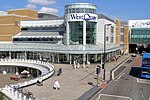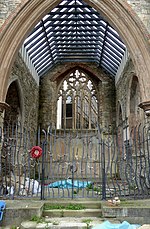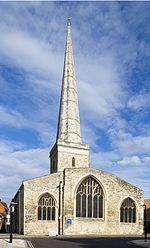Southampton

Southampton ( (listen)) is a port city in the ceremonial county of Hampshire in southern England. It is located approximately 70 mi (110 km) south-west of London and 15 mi (24 km) west of Portsmouth. The city forms part of the South Hampshire built-up area, which also covers Portsmouth and the towns of Havant, Waterlooville, Eastleigh, Fareham and Gosport. A major port, and close to the New Forest, it lies at the northernmost point of Southampton Water, at the confluence of the River Test and Itchen, with the River Hamble joining to the south. Southampton is classified as a Medium-Port City.Southampton was the departure point for the RMS Titanic and home to 500 of the people who perished on board. The Spitfire was built in the city and Southampton has a strong association with the Mayflower, being the departure point before the vessel was forced to return to Plymouth. In the past century, the city was one of Europe's main ports for ocean liners and more recently, Southampton is known as the home port of some of the largest cruise ships in the world. The Cunard Line maintains a regular transatlantic service to New York from the city. Southampton is also one of the largest retail destinations in the South of England.Southampton was heavily bombed during the Second World War during what was known as the Southampton Blitz. It was one of the major embarkation points for D-Day. It was also where troops left England for the Battle of Agincourt and was itself victim of a number of raids from French pirates in the Middle Ages, leading to the construction of the fortified town walls, many of which still stand today. Jane Austen also lived in Southampton for a number of years. In 1964, the town of Southampton acquired city status, becoming the City of Southampton.Some notable employers in the city include the University of Southampton, Ordnance Survey, BBC South, Associated British Ports and Carnival UK.The unitary authority area of Southampton had a population of 253,651 at the 2011 census, making it one of the most populous cities in southern England. Southampton forms part of the larger South Hampshire conurbation.
Excerpt from the Wikipedia article Southampton (License: CC BY-SA 3.0, Authors, Images).Southampton
High Street, Southampton St Mary's
Geographical coordinates (GPS) Address Nearby Places Show on map
Geographical coordinates (GPS)
| Latitude | Longitude |
|---|---|
| N 50.9025 ° | E -1.4041666666667 ° |
Address
The Bargate
High Street
SO14 2BY Southampton, St Mary's
England, United Kingdom
Open on Google Maps










